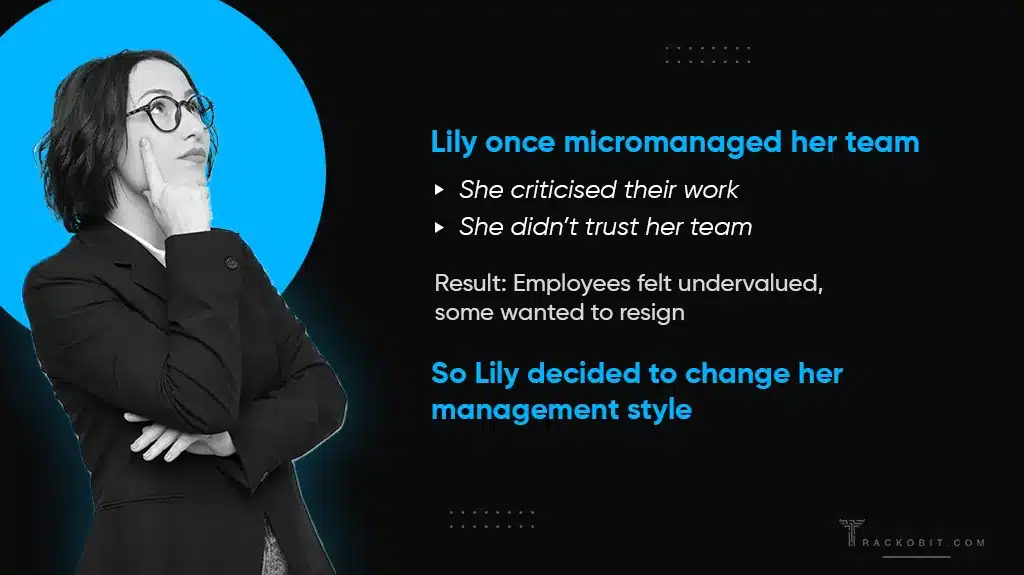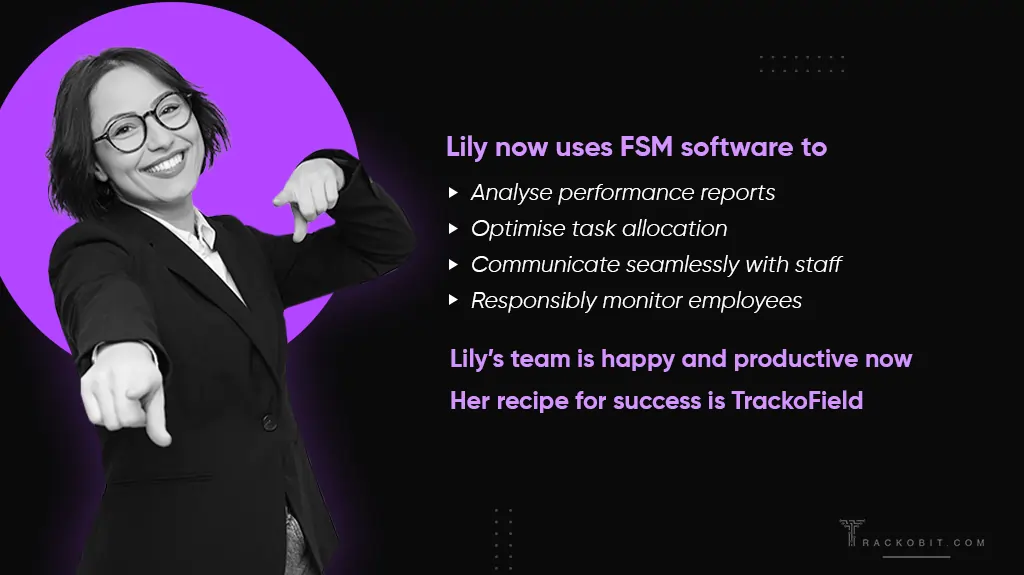-
TrackoBit
Manage commercial vehicles with the new-age Fleet Management Software
TrackoBit -
TrackoField
Streamline your scattered workforce with Field Force Management Software
TrackoField -
Features Resources
-
Blog
Carefully curated articles to update you on industrial trends. -
White Paper
Insightful papers and analysis on essential subject matters. -
Glossary
Explore an alphabetical list of relevant industry terms. -
What’s New
Get TrackoBit & TrackoField monthly updates here. -
Case Study
Explore the cases we solved with our diverse solutions. -
Comparisons
Compare platforms, features, and pricing to find your best fit.
-
About Us
Get to know TrackoBit: our team, ethos, values, and vision. -
Careers
Join the most dynamic cult of coders, creatives and changemakers. -
Tech Support
Learn about our technical support team and services in detail. -
Events
Check out the exhibitions where we left our marks and conquered. -
Contact Us
Connect with us and let us know how we can be of service.
7 Strategies To Better Manage Your Field Employees
- Author:Mudit Chhikara
- Read Time:9 min
- Published:
- Last Update: December 17, 2025
Table of Contents
Toggle
Discover how you can leverage mobile workforce management software to manage your field employees and improve their productivity.
Table of Contents
ToggleDoes a large part of your organization work away from you, and each other?
As a field operations manager, this puts you in a difficult position. It can be challenging to track remote employees as they are always travelling. Communication and performance is another hurdle when it comes to managing field employees.
But how to tackle this problem?
The best way is to implement a solution to automate your field operations. But that also requires thorough planning.
On that note, we bring you the following seven strategies to better manage your field employees using field service management software.

Qualities of a good field operations manager
Mistakes to Avoid When Managing Field Employees
Regardless of how effective of an in-office manager you are, things can get pretty complicated when you have to manage field employees.
To increase productivity or stay in control, managers often make some of the following mistakes. They might seem small but can make or break your field-based teams’ outputs and morale.
1. Making Them Feel Disconnected
On a general level, field employees tend to be disconnected from the entire sense of a team. However, when you’re working in a hybrid model where some of your employees have to run around in the field and some stay put in the office, the problem only worsens.
Executives in the office tend to be in better touch with each other and with their managers. Field employees, on the other hand, are a part of the team, but hardly get to communicate and connect with the team.
In the fast-paced and dynamic nature of your field employee’s work, it’s easy for field employees to feel alone and isolated in their job. This can lead to miscommunication or a looming negative perception of the management. All this, in return, can lead to field employees rebelling, being dissatisfied with their jobs, or not meeting their goals.
2. Not Outlining Company Values With Them
As long as the goals are being met and field employees are doing their share, they don’t need to know what the company stands for, right?
WRONG!
Field employees are often the primary representatives of your company to your target clientele. Be it a sales executive, after-sales executive, or even a retail store employee, it is them who interact with customers, not the senior management. If they are oblivious to the company’s values, they will not translate their passion to the clients.
For example, Decathlon has a very strong brand value of promoting sustainability and sports in society at large. All their employees are very aware of this vision, and it shows in the way the sales representatives interact with customers and maintain their stores.
3. Helicopter-parenting Them
Micromanaging employees or helicopter-parenting is a common practice in field business. However, micromanaging makes employees feel untrusted and subdued. Naturally, putting your employees in such a headspace is not going to get you many benefits.

Consequences of Micromanaging Your Field Team
4. Not Paying Attention to Their Activity
While micromanaging is not the way to go, neither is not looking into their work at all. After all, people are prone to sinning and will steal time from you if they do not feel the need to be accountable. This makes profits and productivity suffer like nothing else.
At the end of the day, you need to strike a balance between monitoring field executives’ activities and avoiding being a CCTV aunty!
5. Setting Unrealistic Goals
Sure, while not seeing people conduct tasks in person, it is hard for field operations managers to know just how much time and effort it takes to conduct specific tasks.
Resultantly, it is common for them to set unrealistic goals for their team of field executives. However, that is extremely detrimental to your team’s productivity.
Why?
Because setting unrealistic goals will make employees lose morale and keep them stressed about meeting impossible deadlines. This will lead to more frequent burnout, making your team’s employee turnover skyrocket. Plus, you’ll lose company goodwill to hire new talent.
How To Make Sure Your Field Employees Are Staying On Track? Workforce Management Software
When you’re responsible for managing every field employee, it is hard to keep track of things manually. The more people in your team, the more complex it is to track, manage, and keep everyone’s productivity at a maximum.
Here are problems you’re sure to experience while manually managing a team:
- Maintaining accurate timesheets and attendance records
- Managing ad-hoc tasks and allotting the right work to the right people
- Tracking the field expense reimbursements you’ve to make to employees
- Maintaining a smooth workflow and communication between employees
The list can go on.
And the one-stop solution to all these problems is Field Force Management Software. While the purpose of the software is to automate field tasks, even if you’re only interested in tracking and maintaining records, it’ll come in handy to you.
With solutions such as leave and attendance management software, task management, expense records, digital documentation, and analytical reports, you’ll feel a lot of your burden lessened.
Wondering how? We’ve dedicated an entire section to discussing how you can keep your field employees on track with field force management software!
Tips To Manage Your Field-based Team And Improve Your Operations: How Field Force Management Software Helps
By now you know the things you shouldn’t do to keep productivity from falling. Now let us discuss the things you should do to boost productivity in your organisation!
Here are some tips to better manage your field employees’ team with aid from field workforce management software.
1. Make Them Feel Connected With Proper Communication Tools
The job description of a field employee might as well include – lonely workday management. Therefore, making sure that your field employees do not feel isolated at their jobs should be your number one goal as a field operations manager.
To make sure that your field employees can feel as connected with the organization and their team as they have to be with the clients, make sure to:
- Use TrackoField’s chatboxes to constantly stay in touch with employees
- Resolve all their problems as and when they come to make them feel supported
- Engage with them through regular team meetings
- Use TrackoField’s announcement feature to keep them posted or motivated
- Approve their expense and leave requests on time
2. Maintain Task and Locational Transparency with Accurate Monitoring
Knowing where each field employee is and how their tasks are coming along is crucial for you. After all, how would you know if work is being done and who is closest to an ad-hoc task site?
However, you cannot keep calling employees to know their whereabouts, can you? This is where field force management software comes in.
It allows you to track tasks and locations without making the employees feel like they are constantly under strict surveillance. However, knowing that they are being monitored will also help them stay accountable and vigilant to not waste time on the field.
3. Skip Micromanaging Tasks by Pre-assigning
It’s time to break the habit of assigning the day’s work in the morning and then keeping an active eye on employees throughout the day. If you keep doing that, when will you get the time to read blogs like these and strategise?
Field force management software like TrackoField minimises micromanaging and gives you more time for managerial work like pre-assigning tasks to employees. Therefore, you can plan ahead and assign all tasks to all employees a week in advance.
After that, let them do things at their own pace and in their own way. All you have to do now is manage the ad-hoc tasks!

How to use FSM Software to optimise your field workforce operations
4. Make Use of Alerts to Encourage Response, not Reaction
Transparency and open communication are two great ways to keep your team connected, motivated, and on track. It lets you stay in control while macromanaging your team.
You can track everything through the system and set alarms or alerts for emergency issues.
This way, when a blunder happens, you will know as and when the problem needs to be addressed. Not when the problem has had a butterfly effect and disrupted other operations as well. When you know what to address when the problem arises, you can respond to the situation and manage it effectively instead of reacting to it when it’s too late.
5. Monitor Them Without Hovering By Complete Data Collection
As mentioned before, both helicopter parenting and careless management are not acceptable in field services. Through field employee management software, you can accurately collect all the data you need to stay in the know.
The best thing about such software is that you do not have to sit through masses of boring data. Instead, it will present reports in bite-sized formats for you to easily digest!
6. Give Accurate Feedback through Personalised Performance Analysis
Employee training is important, especially in the dynamic world of field operations. According to studies, 37% of employees leave their jobs when they do not feel like they’re learning anything or growing professionally.
You must frequently offer feedback and conduct training programs. However, general training and feedback might not work for experienced employees. Therefore, you must leverage data from field force management software.
- Get dedicated performance reports for each employee
- Learn about their weaknesses and strengths
- Offer constructive feedback that is personally directed towards them, not just the team as a whole
- Conduct training programs that help employees hone their skills and fix performance gaps
You can also use these reports to strategically assign the perfect task for each employee according to their strengths and experience.
7. Set Achievable Goals By Analysing Employees’ Full Capacities
With software aid, you can look at tasks not from just the ground level, but also from a bird’s eye view. Therefore, even if goals are not met, you can understand why that is and how you can meet those gaps.
You should use performance reports to understand your team’s full capacity and assign tasks accordingly. If the data shows you that everyone has their hands full, do not overburden them with unrealistic goals. It might make them feel overwhelmed and dissatisfied.
Make Your Field Operations Easy-breezy With TrackoField
The best strategy to manage your field employees and boost workforce productivity is by fostering a culture of trust and accountability. Micromanaging or hand-holding employees is not right.
You need to give your employees space to work and trust them to get the job done. Field service management software uses real-time tracking and reporting capabilities to better manage field employees.
It can streamline field operations and allow managers to focus on larger tasks like strategising and improving employee satisfaction.
FAQs
-
How does mobile workforce management software help you better manage your field employees?
A mobile workforce management solution can streamline all your field operations. It lets you conveniently allocate tasks, monitor field executives in real-time, and track their attendance. You can also communicate remotely without delays and better guide your employees.
-
What is the best strategy to manage your field employees?
Fostering a culture of trust and proper communication with employees is the best strategy to manage your field workforce. You should hire responsible workers and trust them to get the job done with accuracy and no delays. There should also be transparent communication between employees and managers. It reduces errors, improves employee satisfaction, and boosts efficiency.
Mudit is a seasoned content specialist working for TrackoField. He is an expert in crafting technical, high-impact content for Field force manage... Read More
Related Blogs
-

Unified Field Workforce Dashboard: Monitor Tasks, Attendance & More In One Place
Mudit Chhikara December 15, 2025Bring full clarity to field operations with a single, real-time field workforce dashboard.
-

Loan Disbursement in NBFCs: From 15 Days to 3 Minutes – Learn How
Shemanti Ghosh December 11, 2025TrackoField’s AI-enabled field force automation software speeds up loan disbursals in NBFC with field agent task monitoring and facial attendance…
-

AI Facial Recognition Attendance: A Game-Changer for Fraud-Free Field Operations
Mudit Chhikara December 9, 2025Ensure transparent attendance and eliminate fraud before it even starts with AI facial recognition and geofencing.
-

Boost Agri-Input Sales Efficiency with TrackoField’s Sales Order Management Module
Shemanti Ghosh December 3, 2025Grow Agri-input sales and expand farmer database with TrackoField’s Sales Order Management module.

Subscribe for weekly strategies to boost field team productivity.
Your inbox awaits a welcome email. Stay tuned for the latest blog updates & expert insights.
"While you're here, dive into some more reads or grab quick bites from our social platforms!"Stay Updated on tech, telematics and mobility. Don't miss out on the latest in the industry.
We use cookies to enhance and personalize your browsing experience. By continuing to use our website, you agree to our Privacy Policy.


































